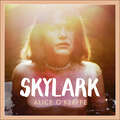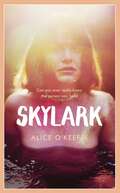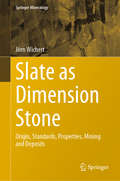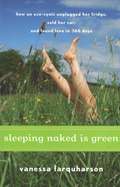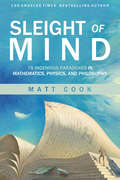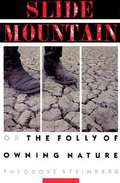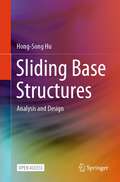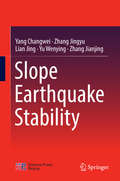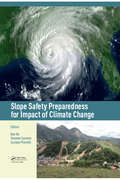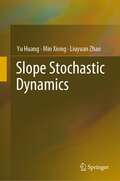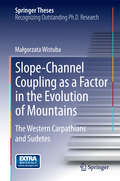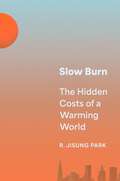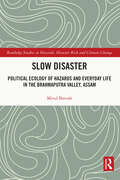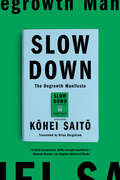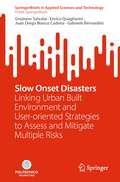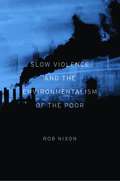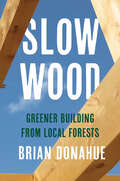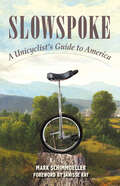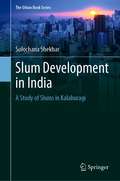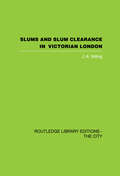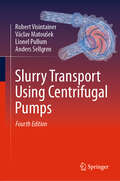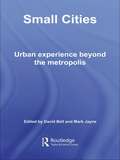- Table View
- List View
Skylark: THE COMPELLING NOVEL OF LOVE, BETRAYAL AND CHANGING THE WORLD
by Alice O'KeeffeTheir ideals brought them together, but how closely should you follow your heart?It's the mid-90s, and rebellion is in the air.Skylark is an activist, a raver, a tree-dweller, a world-changer.Handsome, dependable Dan appears on the scene, offering her the security she has never had. When they fall in love, she shows him a new way to live; he will never be the same.But Dan has a secret, which Skylark must never, ever know.A secret so powerful that its fault-lines run from their ordinary council flat right up to the highest echelons of the state.Their story is the story of Britain's undercover police.As Skylark comes to doubt not only Dan's commitment to their shared ideals, but his very identity, she finds herself asking: can you ever really know the person you love?(P) 2021 Hodder & Stoughton Limited
Skylark: The new novel from the author of ON THE UP
by Alice O'Keeffe'SKYLARK plunges the reader headfirst into a vivid, heady world where passion and betrayal collide. Beautifully-written, immersive and ultimately enraging, it's a must-read for anyone who has ever wanted to change the world.' - Erin Kelly'Alice O'Keeffe deftly renders the shocking truth of the spy cops scandal into a moving tale of love, identity and betrayal. Essential reading.' - Jake Arnott'Skylark is a book of profound psychological perception, which conjures with deft precision the atmosphere of the anti-roads movement in all its fierce, tender idealism. I couldn't put it down.' - Jay Griffiths Their ideals brought them together, but how closely should you follow your heart?It's the mid-90s, and rebellion is in the air.Skylark is an activist, a raver, a tree-dweller, a world-changer. Handsome, dependable Dan appears on the scene, offering her the security she has never had. When they fall in love, she shows him a new way to live; he will never be the same. But Dan has a secret, which Skylark must never, ever know. A secret so powerful that its fault-lines run from their ordinary council flat right up to the highest echelons of the state.Their story is the story of Britain's undercover police.As Skylark comes to doubt not only Dan's commitment to their shared ideals, but his very identity, she finds herself asking: can you ever really know the person you love?
Skylark: The new novel from the author of ON THE UP
by Alice O'Keeffe'SKYLARK plunges the reader headfirst into a vivid, heady world where passion and betrayal collide. Beautifully-written, immersive and ultimately enraging, it's a must-read for anyone who has ever wanted to change the world.' - Erin Kelly'Alice O'Keeffe deftly renders the shocking truth of the spy cops scandal into a moving tale of love, identity and betrayal. Essential reading.' - Jake Arnott'Skylark is a book of profound psychological perception, which conjures with deft precision the atmosphere of the anti-roads movement in all its fierce, tender idealism. I couldn't put it down.' - Jay Griffiths Their ideals brought them together, but how closely should you follow your heart?It's the mid-90s, and rebellion is in the air.Skylark is an activist, a raver, a tree-dweller, a world-changer. Handsome, dependable Dan appears on the scene, offering her the security she has never had. When they fall in love, she shows him a new way to live; he will never be the same. But Dan has a secret, which Skylark must never, ever know. A secret so powerful that its fault-lines run from their ordinary council flat right up to the highest echelons of the state.Their story is the story of Britain's undercover police.As Skylark comes to doubt not only Dan's commitment to their shared ideals, but his very identity, she finds herself asking: can you ever really know the person you love?
Slate as Dimension Stone: Origin, Standards, Properties, Mining and Deposits (Springer Mineralogy)
by Jörn WichertThis book offers a comprehensive review devoted exclusively to slate as dimension stone. Beginning with a description of the slate as dimension stone, the book describes the origin of slate and related geological phenomena.It thoroughly explains key data acquisition methods and techniques, which are accompanied by extensive data. In turn, slate standards are introduced and compared with regard to their importance for product quality. The book covers in detail the specific petrographical, fabric, strength, physical properties and weathering behaviour of slates.The chapter on mining and production provides an overview of the different forms of exploitation and related geotechnical aspects, together with production and workflow design, from the beginning to the final product.The second part comprises a thorough description of worldwide slate deposits and their geology, properties and appearance as well as a brief introduction of the history.Given its scope and accessible format, the book represents an essential guide for scientists, engineers, and professionals in geology, conservation science, architecture, and mining, as well as readers who are active in the slate industry.
Sleeping Naked Is Green
by Vanessa FarquharsonNo one likes listening to smug hippies bragging about how they don't use toilet paper, or worse yet, lecturing about the evils of plastic bags and SUVs. But most of us do want to lessen our ecological footprint. With this in mind, Farquharson takes on the intense personal challenge of making one green change to her lifestyle every single day for a year to ultimately figure out what's doable and what's too hardcore. Vanessa goes to the extremes of selling her car, unplugging the fridge, and washing her hair with vinegar, but she also does easy things like switching to an all-natural lip balm. All the while, she is forced to reflect on what it truly means to be green. Whether confronting her environmental hypocrisy or figuring out the best place in her living room for a compost bin full of worms and rotting cabbage, Vanessa writes about her foray into the green world with self-deprecating, humorous, and accessible insight. This isn't a how-to book of tips, it's not about being eco-chic; it's an honest look at what happens when an average girl throws herself into the murkiest depths of the green movement.
Sleight of Mind: 75 Ingenious Paradoxes in Mathematics, Physics, and Philosophy (The\mit Press Ser.)
by Matt CookExploring more than seventy-five well-known paradoxes in mathematics, philosophy, physics, and the social sciences showing how reason and logic can dispel the illusion of contradiction.Paradox is a sophisticated kind of magic trick. A magician's purpose is to create the appearance of impossibility, to pull a rabbit from an empty hat. Yet paradox doesn't require tangibles, like rabbits or hats. Paradox works in the abstract, with words and concepts and symbols, to create the illusion of contradiction. There are no contradictions in reality, but there can appear to be. In Sleight of Mind, Matt Cook and a few collaborators dive deeply into more than 75 paradoxes in mathematics, physics, philosophy, and the social sciences. As each paradox is discussed and resolved, Cook helps readers discover the meaning of knowledge and the proper formation of concepts—and how reason can dispel the illusion of contradiction. The journey begins with “a most ingenious paradox” from Gilbert and Sullivan's Pirates of Penzance. Readers will then travel from Ancient Greece to cutting-edge laboratories, encounter infinity and its different sizes, and discover mathematical impossibilities inherent in elections. They will tackle conundrums in probability, induction, geometry, and game theory; perform “supertasks”; build apparent perpetual motion machines; meet twins living in different millennia; explore the strange quantum world—and much more.
Slide Mountain, or, The Folly of Owning Nature
by Theodore SteinbergThe drive to own the natural world in twentieth-century America seems virtually limitless. Signs of this national penchant for possessing nature are everywhere--from suburban picket fences to elaborate schemes to own underground water, clouds, even the ocean floor.
Sliding Base Structures: Analysis and Design
by Hong-Song HuThis open access book is an efficient and economic approach for mitigating the seismic damage of low-rise buildings. This book presents various aspects of SB structures, including their fundamentals, dynamic analysis procedures, seismic response characteristics, design methods, and practical applications. It contains a comprehensive study on the influence of various structural and ground motion characteristics on the responses of SB structures, which is particularly helpful for the readers to fully understand the behavior of SB structures. Researchers and engineers in the field of structural engineering and earthquake engineering will benefit from this book.
Slope Earthquake Stability
by Yang Changwei Zhang Jingyu Lian Jing Yu Wenying Zhang JianjingThis book begins with the dynamic characteristics of the covering layerbedrock type slope, containing monitoring data of the seismic array, shaking table tests, numerical analysis and theoretical derivation. Then it focuses on the landslide mechanism and assessment method. It also proposes a model that assessing the hazard area based on the field investigations. Many questions, exercises and solutions are given. Researchers and engineers in the field of Geotechnical Engineering and Anti-seismic Engineering can benefit from it.
Slope Safety Preparedness for Impact of Climate Change
by Ken Ho Luciano Picarelli Suzanne LacasseMany countries are increasingly threatened by major landslide disasters and fatalities due to extreme weather events which have major implications for public safety and the sustainability of infrastructure and the built environment. A further increase in such a trend could come from climate change. This book helps to fill in the gap due to the fact that landslide hazards are commonly not covered under the policy debate on climate change. The book highlights the importance of raising awareness to the challenges of landslide hazards due to climate impact. It provides a holistic frame for understanding the key issues and new tools that could be used to assess and manage the landslide risks. The book gathers contributions from 21 countries and regions in the form of national reports or summaries with respect to four key aspects: a) the methods used for evaluating changing weather and changing landslide patterns; b) the changing weather patterns; c) the changing landslide patterns and hazard scenarios; d) the applications to risk management and the formulation of adaptation measures. Recommendations are made for enhanced preparedness and resilience. Improved crisis management and areas for future work are suggested.
Slope Stochastic Dynamics
by Yu Huang Min Xiong Liuyuan ZhaoThis book provides a new framework for analysis of slope nonlinear stochastic seismic dynamic response based on the new theoretical tool of stochastic dynamics. The coupling effects of uncertainty of geological parameters, strong dynamic nonlinearity, and randomness of ground motion are considered in the process of the seismic dynamic stability assessment of slope. In this book, an intensity frequency non-stationary stochastic ground motion model based on time-domain stochastic process description is preliminarily established to characterize the randomness of earthquakes. The spatial distribution random field model of geotechnical parameters is established to describe the time-space variability of geotechnical parameters. Based on the basic theory of stochastic dynamics, the seismic stability performance evaluation method of slope is established. The slope seismic dynamic model test based on large complex shaking table is performed to verify and modify the proposed framework and method. This book sheds new light on the development of nonlinear seismic stochastic dynamics and seismic design of slope engineering.
Slope-Channel Coupling as a Factor in the Evolution of Mountains
by Małgorzata WistubaIn this thesis, coupling between the delivery of slope material into valley floors and river erosion is considered to be a factor in the evolution of mid-altitude, forested mountains. Analyses of slope-channel interactions were made in ten small catchments with particular emphasis on landsliding-erosion feedback. An original, new dendrogeomorphic approach was applied to determine the cyclic occurrence of landsliding and erosion during recent decades. The results of dendrochronological studies show that the processes studied are strongly interdependent. Fluvial erosion can trigger landsliding by undermining slope bases. Landsliding can intensify erosion by delivering slope material into valley floors. The results of dendrochronological studies have permitted a better understanding of the relief observed in areas where landslides and erosion are coupled. A scheme was established which describes the importance of coupling in the evolution of mid-mountain landscape.
Slow Burn: The Hidden Costs of a Warming World
by R. Jisung ParkHow the subtle but significant consequences of a hotter planet have already begun—from lower test scores to higher crime rates—and how we might tackle them todayIt&’s hard not to feel anxious about the problem of climate change, especially if we think of it as an impending planetary catastrophe. In Slow Burn, R. Jisung Park encourages us to view climate change through a different lens: one that focuses less on the possibility of mass climate extinction in a theoretical future, and more on the everyday implications of climate change here and now.Drawing on a wealth of new data and cutting-edge economics, Park shows how climate change headlines often miss some of the most important costs. When wildfires blaze, what happens to people downwind of the smoke? When natural disasters destroy buildings and bridges, what happens to educational outcomes? Park explains how climate change operates as the silent accumulation of a thousand tiny conflagrations: imperceptibly elevated health risks spread across billions of people; pennies off the dollar of productivity; fewer opportunities for upward mobility.By investigating how the physical phenomenon of climate change interacts with social and economic institutions, Park illustrates how climate change already affects everyone, and may act as an amplifier of inequality. Wealthier households and corporations may adapt quickly, but, without targeted interventions, less advantaged communities may not.Viewing climate change as a slow and unequal burn comes with an important silver lining. It puts dollars and cents behind the case for aggressive emissions cuts and helps identify concrete steps that can be taken to better manage its adverse effects. We can begin to overcome our climate anxiety, Park shows us, when we begin to tackle these problems locally.
Slow Disaster: Political Ecology of Hazards and Everyday Life in the Brahmaputra Valley, Assam (Routledge Studies in Hazards, Disaster Risk and Climate Change)
by Mitul BaruahThis book presents a fascinating, ethnographic account of the challenges faced by communities living in Majuli, India, one of the largest river islands in the world, which has experienced immense socio-environmental transformations over the years, processes that are emblematic of the Brahmaputra Valley as a whole. Written in an engaging style, full of the author's insider perspectives, this insightful volume explores the processes of flooding and riverbank erosion in Majuli, including re-configuration of the island’s geographies, loss of local livelihoods, and large-scale displacement of the population. The book begins with an examination of the physical geography of Majuli and its ecological complexities, leading to discussion on the role of the state in water governance and hazard management, as well as popular resistance by the rural communities on the island. The book focuses on livelihoods as a way of offering economic context to living in challenging environmental conditions and examines the interactions between the state and a whole host of non-state actors, and the everyday, arbitrary functioning of the bureaucracy in a hazardscape. This volume is an invaluable resource for scholars interested in political ecology of hazards and vulnerability, water and hydraulic infrastructure, rural livelihoods and agrarian questions, state theorizations, island studies, and resistance and social movements, as well as those with an interest in northeast India more generally across various disciplines.
Slow Down: The Degrowth Manifesto
by KOHEI SAITO"[A] well-reasoned and eye-opening treatise . . . [Kohei Saito makes] a provocative and visionary proposal." —Publishers Weekly, (starred review)"Saito&’s clarity of thought, plethora of evidence, and conversational, gentle, yet urgent tone . . . are sure to win over open-minded readers who understand the dire nature of our global. . . . A cogently structured anti-capitalist approach to the climate crisis." —Kirkus Reviews (starred review)Why, in our affluent society, do so many people live in poverty, without access to health care, working multiple jobs and are nevertheless unable to make ends meet, with no future prospects, while the planet is burning?In his international bestseller, Kohei Saito argues that while unfettered capitalism is often blamed for inequality and climate change, subsequent calls for &“sustainable growth&” and a &“Green New Deal&” are a dangerous compromise. Capitalism creates artificial scarcity by pursuing profit based on the value of products rather than their usefulness and by putting perpetual growth above all else. It is therefore impossible to reverse climate change in a capitalist society—more: the system that caused the problem in the first place cannot be an integral part of the solution. Instead, Saito advocates for degrowth and deceleration, which he conceives as the slowing of economic activity through the democratic reform of labor and production. In practical terms, he argues for:the end of mass production and mass consumptiondecarbonization through shorter working hours the prioritization of essential labor over corporate profitsBy returning to a system of social ownership, he argues, we can restore abundance and focus on those activities that are essential for human life, effectively reversing climate change and saving the planet.
Slow Fashion: Aesthetics Meets Ethics
by Safia MinneySlow Fashion offers creatives, entrepreneurs, and ethical consumers alike a glimpse into the innovative world of the eco-concept store movement, sustainable design, and business that puts people, livelihoods, and sustainability central to everything they do. <p><p> Safia Minney argues that the future of brick and mortar retail is in the best in fair trade, sustainability, and organic products, together with vintage and second hand goods and local produce. Restorative economics, the well-being of our planet, and our bodies and minds can be inspired by this growing sector, one that is shaping big business.This book curates pioneering people and projects that will inspire you to be part of the change. International names include Livia Firth, Zandra Rhodes, and Lily Cole. American change-makers include Andrew Morgan, filmmaker (The True Cost, a ground-breaking documentary that asks us each to consider who pays the price for our clothing), and Dana Geffner (Fair World Project). <p> With full color photography and elegant design, Slow Fashion profiles the people bringing the alternatives to the mainstream: designers, labels, and eco-concept stores across the world; fair trade producers; campaigns that are re-designing the fashion economy; and the fibers and fabrics which are making a difference.
Slow Onset Disasters: Linking Urban Built Environment and User-oriented Strategies to Assess and Mitigate Multiple Risks (SpringerBriefs in Applied Sciences and Technology)
by Gabriele Bernardini Graziano Salvalai Enrico Quagliarini Juan Diego Blanco CadenaThe book provides an overview of the Slow Onset Disasters (SLOD) in the urban built environment discussing potential strategies to assess and mitigate multiple climate change related risks. Climate change evidence has been reported in the last decades, suggesting that the anthropogenic activities are accelerating these changes towards a warmer and more polluted environment. In this context, SLODs have been linked to climate change related disasters and have been stated to have a higher impact risk within dense built environment (BE). Therefore, the book presents a description of the most relevant SLODs, their significance, and confluence, the way in which scientists and entities are monitoring their progression at different scales, a structured risk assessment strategy and the deconstruction of the BE characteristics that make it more prone to SLODs risk. In addition, it highlights the necessity of adapting the traditional risk assessment methods, to account for different vulnerability types, including the morphology and materiality of the BE, and the BE users’ characteristics. In fact, individual features influence users’ responses and tolerance to environmental stressors, because of age, health, gender, habits, and behaviour, thus impacting the users’ vulnerability. Exposure can then amplify these issues, since it defines the number of users that can be effectively affected by the SLOD. Starting from this perspective, the book first traces literature-based correlations between individual features, use behaviour, and individual response to the SLOD-altered open spaces. Then, a novel methodology, to quantify the variations of users’ vulnerability and exposure, is offered, to support designers in quickly defining input scenarios for risk assessment and mitigation. Lastly, it demonstrates, through a case study, the SLOD risk assessment framework proposed and the evaluation of the efficacy of risk mitigation strategies.
Slow Violence and the Environmentalism of the Poor
by Rob Nixon“Slow violence” from climate change, toxic drift, deforestation, oil spills, and the environmental aftermath of war takes place gradually and often invisibly. Rob Nixon focuses on the inattention we have paid to the lethality of many environmental crises, in contrast with the sensational, spectacle-driven messaging that impels public activism today.
Slow Wood: Greener Building from Local Forests (Yale Agrarian Studies Series)
by Brian DonahueA radical proposal for healing the relationship between humans and forests through responsible, sustainable use of local and regional wood in home building American homes are typically made of lumber and plywood delivered by a global system of ruthless extraction, or of concrete and steel, which are even worse for the planet. Wood is often the most sustainable material for building, but we need to protect diverse forests as much as we desperately need more houses. Brian Donahue addresses this modern conundrum by documenting his experiences building a timber frame home from the wood growing on his family farm, practicing &“worst first&” forestry. Through the stories of the trees he used (sugar maple, black cherry, black birch, and hemlock), and some he didn&’t (white pine and red oak), the book also explores the history of Americans&’ relationship with their forests. Donahue provides a new interpretation of the connection between American houses and local woodlands. He delves into how this bond was broken by the rise of a market economy of industrial resource extraction and addresses the challenge of restoring a more enduring relationship. Ultimately, this book provides a blueprint and a stewardship plan for how to live more responsibly with the woods, offering a sustainable approach to both forestry and building centered on tightly connected ecological and social values.
Slowspoke: A Unicyclist's Guide to America
by Mark SchimmoellerWhy a unicycle? Why a cross-country trip? Why leave a prominent New York magazine and return to the simple life in Kentucky?Reminiscent of classic literary travelogues, Mark Schimmoeller&’s Slowspoke: A Unicyclist&’s Guide to America takes readers on an inward, emotional journey as he inches across landscapes and communities from North Carolina to Arizona.Schimmoeller became inspired by his unicycle as an adolescent. It taught him that rushing—whether down the driveway or toward adulthood—would cause a fall, and so, instead of accepting the speeding, straight line that de-fines modern American life, he adopted his single wheel&’s wayward rhythms.Written with poise and humor, Slowspoke is more than a cross-country trip on a unicycle; it&’s a meditation on a playful, recalcitrant slowness that is increasingly rare in a culture obsessed with acceleration. At times ach-ing and other times joyful, Schimmoeller intersperses recollections of his journey with vignettes of his present-day, off-the-grid homesteading with his wife in Kentucky and their efforts to save an old-growth forest.Schimmoeller&’s personal journey will resonate with anyone who has slowed down to experience life at a unicycle&’s speed or who longs to do so, who has fallen in love or searched for it, or who has treasured tall trees or mourned their loss.
Slum Development in India: A Study of Slums in Kalaburagi (The Urban Book Series)
by Sulochana ShekharThis book is an earnest effort in understanding the slums and their needs by taking a case study of Kalaburagi, India. This study aims to contribute sustainable methodologies to advance the living conditions of slum dwellers and for better execution of slum policies. The core objectives are: 1) mapping the existing slums of Kalaburagi (formerly Gulbarga) city using slum ontology from very high-resolution data and validating the slum map through ground survey and using reliable data; 2) developing a model to understand the factors which are responsible for the present growth as well as to predict the future growth of slums; 3) estimating the housing demand of urban poor and suggesting a suitable site for the rehabilitation program; and 4) suggestions for the better intervention of government policies with special reference to in-situ program.Urban is the future, and slums are its reality. Sustainable development goals are directly and indirectly concerned about the increasing urbanization and the slums. Housing the urban poor and affordable housing to all are the national missions. Practically making these plans successful depends on a deep understanding of urban issues and proper methodology and technology to handle it. The participatory slum mapping, cellular automata slum model, housing demand analysis, and the spatial decision support system demonstrated in the book help in monitoring and managing the slums and thus lead towards a slum-free India.
Slurry Transport Using Centrifugal Pumps
by Václav Matoušek Robert Visintainer Lionel Pullum Anders SellgrenBased on the industry leading short course “Transportation of Solids using Centrifugal Pumps,” founded by Dr. Kenneth Wilson and Graeme Addie, and hosted by the GIW Industries Hydraulic Laboratory, this expanded fourth edition has been extensively updated by the international team of engineers and authors who inherited this legacy and continue its development to the present day. Focusing on the hydraulic design of slurry pipelines, the pumps that power them, and the interactions between pumps and systems, it retains the classroom tested balance of theoretical development and practical engineering which have made it a slurry transport classic. The topics covered are important to slurry system engineers for the optimization of new designs, as well as the operators of existing systems, who may need to calculate and plan for changing conditions from day to day. Updates to the fourth edition include:· Careful formulation of the theoretical concepts, providing greater clarity of slurry flow dynamics, including a new chapter on the principles and characterization of slurry flows. · Expansion of the 4-Component Models for settling slurry pipeline flow and pump solids effect, based on an extensive series of full-sized tests.· An expanded treatment of complex slurries, including a broader discussion of non-Newtonian fluids and their interaction with coarse particles. · A new chapter on test methods, presenting an overview of slurry system instrumentation, modern techniques for characterizing slurry rheology, and practical advice for planning and executing a slurry test.· An overview of advances in the computational modeling of slurries, including an in-depth parametric study of slurry pump wear and operating cost. The authors highlight methods for achieving energy efficiency, which are crucial to the effective use of scarce resources, given the foundational role of slurry transport systems in the energy intensive industries of mining and dredging. Key concepts are supported with case studies and worked examples. Slurry Transport Using Centrifugal Pumps, fourth edition, is both methodical and in-depth. It is ideal as a teaching tool for classroom or self-directed learning domains, and valuable as a design guide for engineer practitioners at all experience levels.
Small Cetaceans of Japan: Exploitation and Biology
by Toshio KasuyaThis book summarizes and analyzes the biology, ecology, exploitation and management of small cetaceans in Japan. It describes the various types of cetacean fisheries in Japan and their historical development, the life histories and ecologies of the main species involved, and the history and problems of conservation and management. The data show that in some cases the number of small cetaceans harvested exceed sustainable limits and have led to depletion of populations. The book provides a case study of what can go wrong when the needs of industry and conservation collide. The descriptions of life history and ecology are relevant to issues of conservation and management, not just for cetaceans, but for all fisheries around the world.
Small Cities: Urban Experience Beyond the Metropolis (Questioning Cities)
by David Bell Mark JayneUntil now, much research in the field of urban planning and change has focused on the economic, political, social, cultural and spatial transformations of global cities and larger metropolitan areas. In this topical new volume, David Bell and Mark Jayne redress this balance, focusing on urban change within small cities around the world. Drawing together research from a strong international team of contributors, this four part book is the first systematic overview of small cities. A comprehensive and integrated primer with coverage of all key topics, it takes a multi-disciplinary approach to an important contemporary urban phenomenon. The book addresses: political and economic decision making urban economic development and competitive advantage cultural infrastructure and planning in the regeneration of small cities identities, lifestyles and ways in which different groups interact in small cities. Centering on urban change as opposed to pure ethnographic description, the book’s focus on informed empirical research raises many important issues. Its blend of conceptual chapters and theoretically directed case studies provides an excellent resource for a broad spectrum of undergraduate and postgraduate students, as well as providing a rich resource for academics and researchers.
